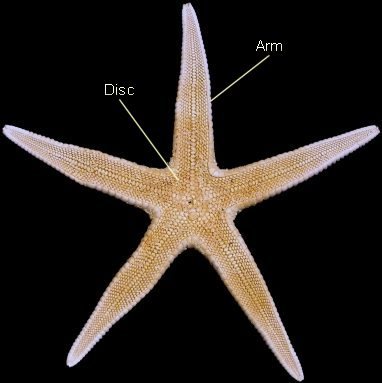 A
A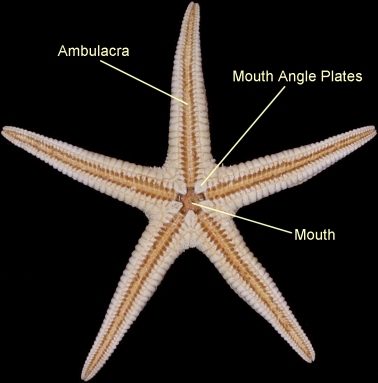 B
B|
ASTEROID TERMINOLOGY |
 A
A B
B
1). (A) Aboral (upper) and (B) oral (under) surfaces of a modern Asteroid (x1.3, Archaster sp., Archasteridae), comparable in general morphology to the Chalk Goniasteridae and Pycinasteridae. The complex asteroid skeleton is composed of many thousand small calcareous ossicles.
Arms (typically 5) extend radially from the central body of the animal; the disc. On the oral surface rows of tube-feet, extensions of the water-vascular-system, protrude from the ambulacra, and are used for locomotion and feeding. Adambulacral ossicles run alongside the ambulacra.
The mouth opening is encircled by modified ambulacral ossicles called mouth angle plates which bear spines. Asteroids respire via small extensions of skin called papulae situated between ossicles.

2). Aboral surface of the disc (x5). The anus is situated centrally, reflecting the radial symmetry of the animal; i.e. there is no natural rear-end where the anus can be situated instead. The madreporite is a sieve-like ossicle through which water enters the water-vascular-system. Rows of brick-like marginal ossicles frame the arms and disc, whilst rows of radial ossicles radiate from the centre of the disc and extend along the mid-line of the arms.
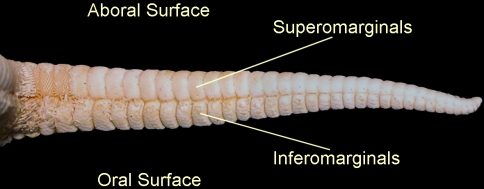
3). Lateral (side) view of an arm (x3). Typically there are 2 rows of marginals; the superomarginals on the aboral surface and the inferomarginals on the oral surface.
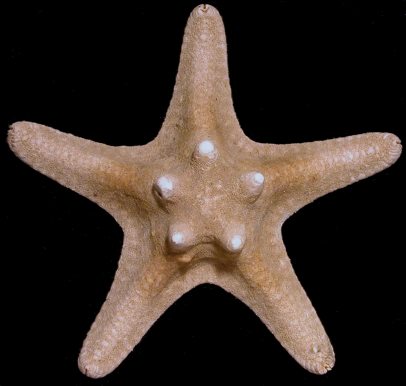 A A |
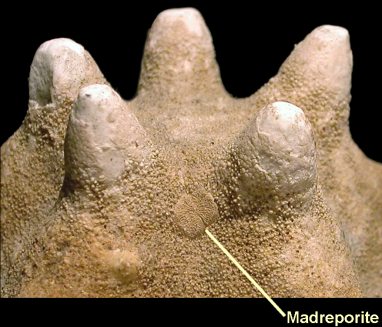 B
B |
4). Robust modern starfish (Protoreaster sp., Oreasteridae), comparable to the Chalk Stauranderasteridae (which may in fact belong with the Oreasteridae); (A) Aboral surface, with a crown of enlarged radials (x1.3); (B) Detail showing the position of the madreporite nestled between the radials (x3.0).
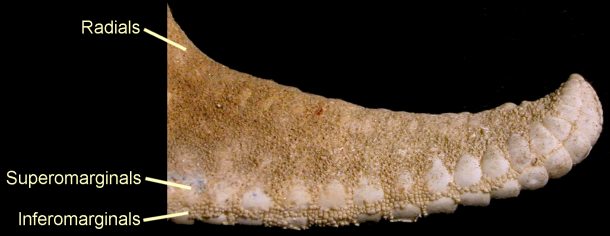
4). Lateral view of an arm from the above individual (x2.5); the tip of the arm is upturned.